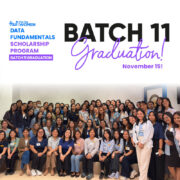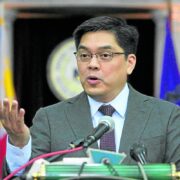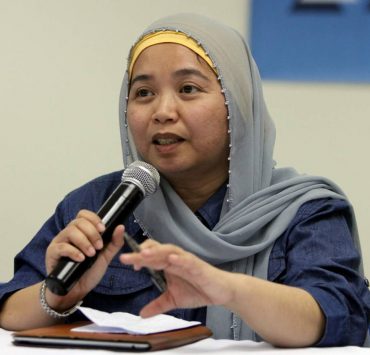How my 10-year-old grandson brought me to Rome

Who would have dreamt I would travel to Rome at Christmastime, more as a pilgrim than a tourist—and all because of my 10-year-old grandson Emilio Duldulao?
When it was first announced that, as a member of the Golden Gate Boys Choir and Bellringers, he would be part of a boys’ choir to sing at the New Year’s Day Mass to be celebrated by Pope Francis, I knew I just had to join the Northern California-based branch of the family in Rome—in winter.
The choir was one coming from 19 countries (none from the Philippines, sadly) and four continents to join the 3,700 young singers to join the international Pueri Cantores (“young singers”) gathering every year after a hiatus of eight years. In 2023, it was the XLIV Congress in Rome. The Golden Gate contingent was the only one with Bellringers, and a special fundraising campaign had to be waged to make possible the transport of the bells and needed equipment.
In the family circle, we knew Emilio loved to sing and fool around like any 10-year-old. We wondered about this new facet of his personality—our image of Emilio suddenly changed. Why, just recently he was MVP of his basketball tournament. Of late, too, he had been faithfully serving at Holy Masses at the St. Raymond Parish in Dublin, East Bay, the church of his school, and had become an admiring good friend of the school chaplain, Fr. John Erick Villa. And then, the regular rehearsals in preparation for the concerts in Rome manifested a new discipline.
Distinct uniforms
Although family and friends were encouraged to travel with the choir, the choir members were housed together, separate from their respective families. We were in a hotel, while the Choir was in a casa in the Vatican. This was a requirement that their musical director maintain discipline throughout their itinerary, ensuring promptness at all rehearsals and performances and a stance of “professionalism,” so to speak.
The boys were well aware of this, so that if we chanced upon them in the streets of Rome, they couldn’t just break away to talk to us—or worse, pose for our requested remembrance shots. They were easy to spot because they were always in their distinct blue uniforms with red neckties. And neither did we dare pull them away from their ranks. The best (or the worst?) we could do was to loudly cheer for them as a sign of recognition and admiration—a gesture they must have been embarrassed about.

Before my private visit to Subiaco in the outskirts of Rome, I had heard that the Choir would also visit. Fat chance for our visits to coincide, I thought. But as I wound up my private tour, I spotted the group of boys in their distinct uniforms. My guide and Subiaco curator Dom Maurizio, OSB, had to seek permission for me to speak to Emilio, who was as surprised as I was to bump into one another.
(It was a must for a dyed-in-the-wool Scholastican like me to visit the cave where St. Benedict, father of monasticism, lived for three years and wrote the Rule of St. Benedict that revolutionized Western thought. The Sacred Cave is a Unesco Heritage Site as it is built/attached to a mountain and has withstood natural calamities. It is so high up that the temperature up there is 0ºF.)

Singing for Pope Francis
For many of the boys, especially the younger ones, it was their first time to be away from family and home. And their tension showed when, during the few free times with their family for shared meals, they would cry. Emilio never openly cried though he did confess that he was crying inside of him—his exact words, not mine.
What a busy calendar of performances the Golden Gate Boys Choir and Bellringers had! The highlights were the two occasions when they sang for Pope Francis. The meeting at the Paul VI Audience Hall was memorable especially because Pope Francis walked on stage before sitting on his wheelchair. Then, at the end of the program, he was wheeled on the aisle where we were seated and Emilio’s sister Juliana was able to shake the Pope’s hand.
What a privilege he especially bestows on children, as he was obviously drawn to them. He had spoken to the singers, commending them: “What you do is very important because your voices help communities to pray, to open their hearts to the Lord, and this is fundamental for the life of the Church.”
There was the New Year’s Day Mass celebrated by Pope Francis and an entourage of cardinals and other clergy where we spotted Cardinal Chito Tagle. This time, there was no chance to touch the Pope’s hand as he was wheeled down our aisle. Instead, one of his aides offered to shake the hand of my granddaughter Juliana, a gesture she snubbed.

There was a choir performance at a Mass in Assisi in Umbria, followed by one in a nearby church, and another one at St. Paul Outside the Walls Basilica, morning Mass in this city with hundreds of churches. As expected, it was an impressive architectural structure with mosaic portraits of all the Popes in church history, with one blank space left for Pope Francis’ successor, which others read as an ominous note.

Exploring Rome
But the best discovery I was led to by fellow tourist Bernie Culaton was the Altar of the Assumption, which had life-sized statues of the twin saints, Benedict and Scholastica.
The day ended with an evening concert of nine choirs at the Basilica di Sant’ Andrea della Valle. Truly, music is the highest form of worship. We were left with lumps in our throats as the young voices sang Christmas carols and “Et in Terra Pax,” a song our war-stricken world needed to listen to.
Not that Emilio did not have the chance to explore Rome as a regular tourist himself. The night before he was scheduled to join his choir, the family took a midnight tour of the Trevi fountain and the Spanish Steps. It was the best time to go to avoid the crowds, capped by a mandatory side trip to a neighboring candy factory and a gelato shop—to soften the instant cultural history overdose.
The boys were extremely exhausted and Emilio needed the days in the family’s next stop, Paris, to physically recover.
How changed was he by the experience? I know how deeply it had impressed and moved him but when we were in London a week after, he was his usual self again, a 10-year-old fan of Harry Potter—the main reason for our London visit.
Though a total Potter fan, I made sure he interacted with our host in London, author Candy Gourlay, telling Emilio he should start discovering her books, as well.


Visiting sacred places
I only went to sacred places. I am not fond of joining tour groups, but since this was focused on Emilio’s performances and the Vatican visits, this was a rare exception. One perk was a private early evening tour of the Vatican Museum and the Sistine Chapel with our guide Simonetta, a graduate of art history. Two hours was too brief for the treasures. My special discovery that Simonetta did not point out was a painting of John Baptist de la Salle teaching in class, painted by Cesare Mariani right before the saint’s beatification. Bro. Armin Luistro, FSC, calls it one of the Vatican Museum’s best-kept secrets.
Another safe and sacred place I took refuge in was the Suore Benedettine Missionarie di Tutzing, where I prayed, dined, and slept with the Benedictine community, thanks to the vicaress, Sr. Lumen Gloria Dungca, OSB, and her hospitality royale.
In the same neighborhood on the main road, Via Aurelia, beside the Pontificio Collegio Filippino, was La Salle’s Casa Generalizia dei Fratelli. Brother Armin was not in town but he arranged my private tour with Brother Dante Amisola, FSC. There was also the Jesuits’ Pontificia Universita Gregoriana, a stone’s throw from Trevi, where Paring Bert Alejo, SJ, lives and teaches—also the university where Sr. Mary John Mananzan, OSB, studied. The day with Paring Bert was meaningful, as it was the Rizal Day celebration in Rome at Piazzale Manila where a Rizal statue stands.
If the Pueri Cantores experience was special for Emilio and one he will remember through his adulthood, so was it for me, a mere tour hanger-on.
By Neni Sta. Romana Cruz

















